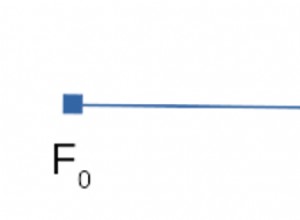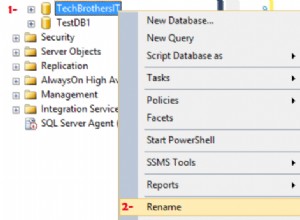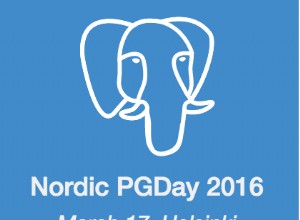select parent, child, level from (
select parent_table.table_name parent, child_table.table_name child
from user_tables parent_table,
user_constraints parent_constraint,
user_constraints child_constraint,
user_tables child_table
where parent_table.table_name = parent_constraint.table_name
and parent_constraint.constraint_type IN( 'P', 'U' )
and child_constraint.r_constraint_name = parent_constraint.constraint_name
and child_constraint.constraint_type = 'R'
and child_table.table_name = child_constraint.table_name
and child_table.table_name != parent_table.table_name
)
start with parent = 'DEPT'
connect by prior child = parent
powinno działać (oczywiście zastąp nazwę tabeli) zakładając, że wszystko jest w tym samym schemacie. Użyj wersji DBA_ tabel słowników danych i warunków dla kolumn OWNER i R_OWNER, jeśli musisz obsłużyć zależności między schematami. Po dalszych rozważaniach nie uwzględnia to również ograniczeń autoreferencyjnych (tj. ograniczenia w tabeli EMP, że kolumna MGR odwołuje się do kolumny EMPNO), więc musisz zmodyfikować kod, aby obsłużyć ten przypadek, jeśli musisz sobie poradzić z ograniczeniami autoreferencyjnymi.
Do celów testowych dodałem kilka nowych tabel do schematu SCOTT, które również odwołują się do tabeli DEPT (w tym zależności wnuka)
SQL> create table dept_child2 (
2 deptno number references dept( deptno )
3 );
Table created.
SQL> create table dept_child3 (
2 dept_child3_no number primary key,
3 deptno number references dept( deptno )
4 );
Table created.
SQL> create table dept_grandchild (
2 dept_child3_no number references dept_child3( dept_child3_no )
3 );
Table created.
i zweryfikowano, że zapytanie zwróciło oczekiwany wynik
SQL> ed
Wrote file afiedt.buf
1 select parent, child, level from (
2 select parent_table.table_name parent, child_table.table_name child
3 from user_tables parent_table,
4 user_constraints parent_constraint,
5 user_constraints child_constraint,
6 user_tables child_table
7 where parent_table.table_name = parent_constraint.table_name
8 and parent_constraint.constraint_type IN( 'P', 'U' )
9 and child_constraint.r_constraint_name = parent_constraint.constraint_name
10 and child_constraint.constraint_type = 'R'
11 and child_table.table_name = child_constraint.table_name
12 and child_table.table_name != parent_table.table_name
13 )
14 start with parent = 'DEPT'
15* connect by prior child = parent
SQL> /
PARENT CHILD LEVEL
------------------------------ ------------------------------ ----------
DEPT DEPT_CHILD3 1
DEPT_CHILD3 DEPT_GRANDCHILD 2
DEPT DEPT_CHILD2 1
DEPT EMP 1




